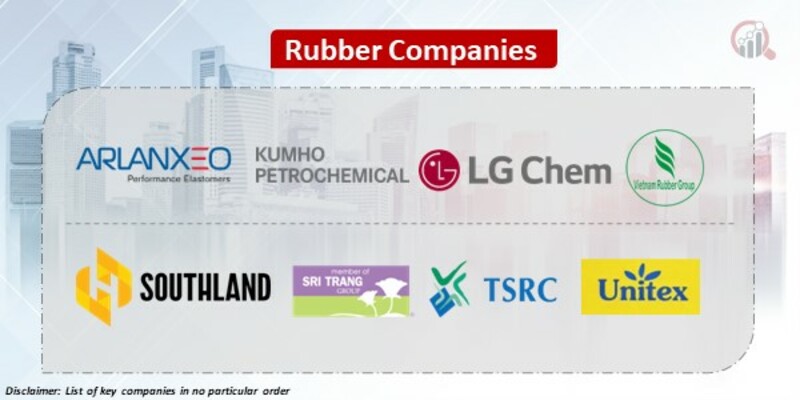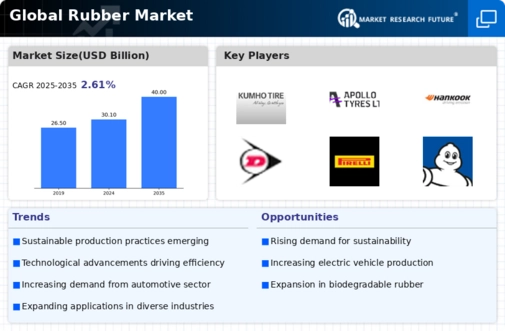Top Industry Leaders in the Rubber Market

The rubber market, a vital cog in the global industrial machine, pulsates with dynamic forces shaping its competitive landscape. From the verdant fields of natural rubber to the complex synthesis of its synthetic counterpart, the race for market share is fueled by a potent mix of innovation, sustainability, and geographical maneuvering. Let's delve into the intricate web of this market, exploring the strategies adopted by key players, the factors that determine dominance, and the recent developments that paint a picture of its future trajectory.
Strategic Maneuvers: A Playbook for Success
-
R&D Prowess: Giants like Bridgestone, Michelin, and Continental invest heavily in research and development, aiming to optimize rubber performance for specific applications. This includes breakthroughs in fuel efficiency for tires, improved heat resistance for industrial applications, and biodegradable alternatives for sustainable solutions. -
Vertical Integration: Major players like Bridgestone and Goodyear are consolidating their hold on the supply chain by integrating upstream into rubber plantations and downstream into tire production. This secures raw material sourcing and optimizes production costs. -
Geographical Expansion: Asia, particularly China, is a magnet for rubber giants. Companies like Bridgestone and Hankook are establishing manufacturing facilities in the region to capitalize on the burgeoning automotive and construction sectors. -
Sustainability as a Differentiator: Eco-conscious consumers are driving demand for sustainable rubber. Companies like Michelin are sourcing natural rubber from certified sustainable plantations, while others like Continental are exploring the use of recycled rubber in tire production. -
Digital Transformation: Embracing digital tools for data analytics, supply chain optimization, and personalized customer experiences is becoming increasingly crucial. Companies like Pirelli are leveraging AI and machine learning to optimize tire production and predict customer needs.
Market Share: The Defining Metrics
-
Product Portfolio: Diversification across rubber types (natural, synthetic, reclaimed) and applications (tires, industrial, medical) is key. Companies like Bridgestone and 3M cater to diverse sectors, mitigating risks and maximizing market reach. -
Brand Recognition: Established brands like Michelin and Goodyear command premium pricing and customer loyalty. Building brand trust through quality and innovation is essential for market share dominance. -
Cost Efficiency: Optimizing production processes, securing raw materials at competitive prices, and minimizing waste are crucial for profitability and market competitiveness. Companies like Continental are implementing lean manufacturing practices to achieve cost leadership. -
Geographical Presence: A strong presence in major rubber-consuming regions like Asia and North America provides access to larger markets and economies of scale. Companies like Bridgestone and Hankook are strategically expanding their geographical footprint.
Key Companies in the Rubber market include
- Arlanxeo (Saudi Arabian Oil Co.)
- Kumho Petrochemical Co. Ltd.
- LG Chem Ltd.
- Southland Holdings LLC
- Sri Trang Agro-Industry Plc
- TSRC Corporation
- Unitex Rubber Co. Ltd.
- Vietnam Rubber Group
- Von Bundit Co. Ltd., etc.
Recent Developments:
October 2023: Continental signs a long-term supply agreement with a Thai rubber producer, securing a stable source of natural rubber at competitive prices.
November 2023: The International Rubber Study Group reports a decline in global rubber consumption due to economic slowdown in major markets.
January 2024: 3M announces the development of a self-healing rubber material, with potential applications in the automotive and aerospace industries.

